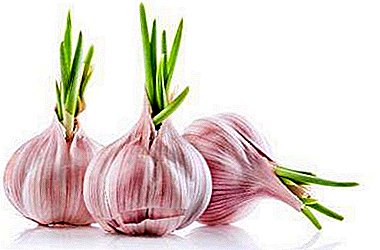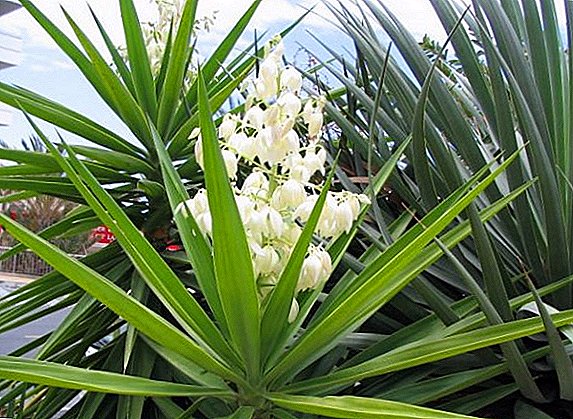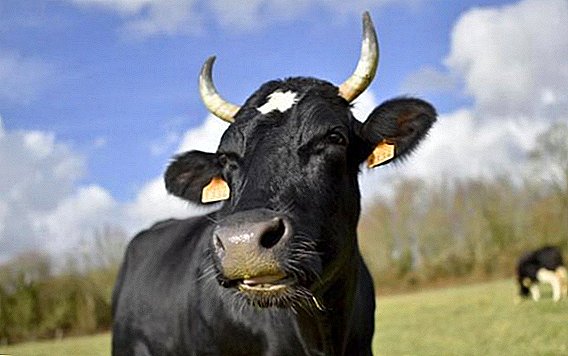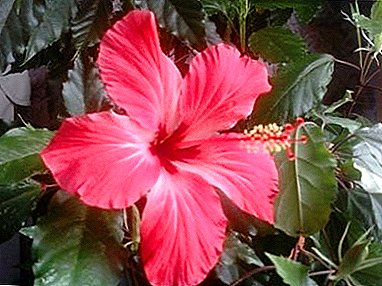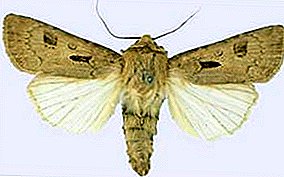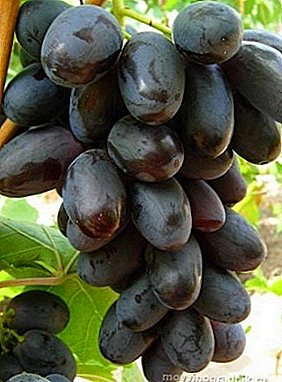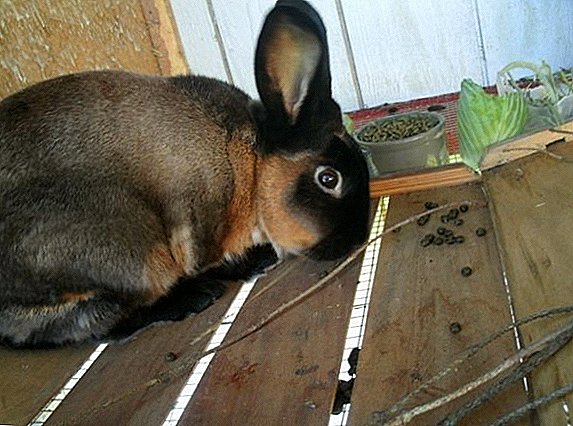 Cultivation of pepper is the third most popular place in the cultivation of vegetables in the garden after potatoes and tomatoes. Gardeners experiment with its varieties, choosing the easiest and most unpretentious to care. Proven variety of sweet pepper "Belozerka" in their garden they plant almost everything.
Cultivation of pepper is the third most popular place in the cultivation of vegetables in the garden after potatoes and tomatoes. Gardeners experiment with its varieties, choosing the easiest and most unpretentious to care. Proven variety of sweet pepper "Belozerka" in their garden they plant almost everything.
Pepper "Belozerka"
For almost thirty years of its existence, the Belozerka pepper variety has proven itself to be planted on home gardens. Him excellent yield, It is resistant to diseases and pests. Peppers are well stored and well suited for home-made products. Let's get acquainted closer with this plant.
Check out the most popular varieties of sweet pepper: "California miracle", "Anastasia", "Swallow", "Kapsikum", "Atlas", "Ox's ear", "Orange miracle", "Kakadu", "Claudio F1", "Gypsy" F1 "and" Bogatyr ".

Bushes
Pepper bushes medium size, compact, half-tumbling, in height from 40 to 80 cm. Usually they are formed into two trunks for even distribution of the load on the plant. There are a lot of leaves, they are simple, with a small petiole, bright green in the form of an oval, pointed at both ends.
The flowers are white or slightly greenish in color, placed between the leaf and the stem. From them by the middle of summer fruits appear. There can be up to twenty peppercorns on a bush. The bush is spreading, and the fruits of the pepper weigh little, so the stems withstand the load well and do not need tying. 
Fruit
On average, a bush can have from five to ten medium-sized fruits, not more than 15 cm in length. They are close in shape to a regular cone, wide at the stem and pointed at the bottom, slightly ribbed, there may be up to three faces. Inside the fruit is hollow and there are grooves on the pulp, on which a lot of seeds ripen. The walls of pepper in thickness from 5 to 8 mm, the weight of the fetus ranges from 80 to 140 grams. The flesh is very juicy, firm. The skin is thin, but not hard.
Unripe fruit saturated green color. Pepper maturity happens technical and biological. Both in the first and in the second case they can be eaten. At the moment of technical maturity, they are yellow or almost white, and when they completely ripen, they turn red.
The taste of the fruit is slightly sweet, sharpness is felt, but not burning, the aroma is well pronounced. Pepper lezhky, well kept in the summer in the refrigerator and in the winter in a cool place. 
Did you know? Pepper belongs to the oldest vegetables of the planet. According to the excavations, it has been known for nine thousand years.
Characteristic variety
Characteristics and description of pepper variety "Belozerka" let's start with the fact that it belongs to sweet varieties and is suitable for cultivation both in greenhouses and in conditions of open ground. Under the film and cover it is planted in more northern areas. In temperate climates and in southern latitudes, he feels great in the soil to which is unpretentious.
It is a hybrid variety, therefore resistant to temperature changes, diseases and pests. Maturation refers to mid-early although some lovers insist that he rather early.
Pepper "Belozerka" grown from seedlings. Technical maturity, when it is already possible to eat, comes on the fruits for 110-115 days after planting, and fully, that is, biologically, they ripen by 140-145 days. 
Variety is different very good yield. With one square meter of planting can be collected seven to eight pounds of peppers.
Bushes are practically not subject to plant diseases and pests. They are well tolerated in both hot and cool summers.
A distinctive feature of Belozerka pepper is the good preservation and transportation of fruits. In the summer, they are perfectly at room temperature and in the refrigerator, and in the winter - in the cellar or other similar rooms.
The variety is excellent for use raw in the period of any maturity, suitable for preservation in whole and in slices, good for freezing. 
Advantages and disadvantages
The grade of Belozerka pepper enjoys deserved popularity thanks to its unpretentiousness and productivity. Harvest he gives steadily with minimal care. It does not require special soil for planting, tolerates temperature changes, matures quite early and is resistant to diseases and pests. There is a good germination of seeds and the survival rate of seedlings after planting in the ground. The bush can bear fruit and at the same time form an ovary, so the crop is harvested over a long period of time. Pepper is attractive for its appearance and taste, wonderful for harvesting, storage and transportation.
Those who grow this variety constantly say that it has no flaws. The only thing noted - it is not very thick flesh.
Did you know? In bell pepper, the content of vitamin A is higher than in carrots, which has long been used to restore vision. Therefore, pepper will bring more benefits to the eyes.

Growing seedlings
To grow peppers on the ground, you first need to grow seedlings. This is not very difficult, but there are still subtleties.
Preparation and selection of seeds and soil
Seeds for planting can be dried independently or buy, but Only from a trusted manufacturer. There are often cases when there are seeds of dubious quality. Before planting, they must be pickled from possible diseases and give them strength. To do this, use a few simple ways. For example, you can dilute a weak solution of potassium permanganate and hold seeds in it for fifteen minutes. Then rinse and allow to dry.
You can use a solution of 3% hydrogen peroxide. It is necessary to warm up a little and hold the seeds in it for no more than five minutes. It will not only rid them of germs, but also provide additional oxygen to stimulate growth. You can soak the seeds in special biological preparations that stimulate growth. As a rule, their use is described in detail on the packaging.  So that the seeds are well sprung, you can vary the composition of the soil. To do this, take equal parts in equal parts, preferably leaf, sand and humus. You can prepare a different composition, taking two parts of humus and peat and one part of sand.
So that the seeds are well sprung, you can vary the composition of the soil. To do this, take equal parts in equal parts, preferably leaf, sand and humus. You can prepare a different composition, taking two parts of humus and peat and one part of sand.
Important! In addition to the treatment of germs, the seeds should be checked for quality, dropping into the water for a few minutes. Those who emerge, most likely will not ascend.
Sowing scheme and further care
Sowing can begin in mid-February.
Immediately pay attention to the fact that the pepper "Belozerka" does not like transplants. Therefore, it is better to plant it immediately in separate pot containers, which will be up to 8 cm in diameter. Prepared earth is placed in pots and a seed is dropped to a depth of about 5 cm. Pots are placed on a tray and covered with a film until the first shoots appear. usually appear on the second or third day.  After that, the film is removed and grown seedlings, avoiding drafts, at room temperature. Sprout must be watered, but not abundant. You can add a teaspoon of hydrogen peroxide per liter of water to the settled water. Such a solution will kill the possible microbes in the soil and strengthen the roots, giving them additional oxygen.
After that, the film is removed and grown seedlings, avoiding drafts, at room temperature. Sprout must be watered, but not abundant. You can add a teaspoon of hydrogen peroxide per liter of water to the settled water. Such a solution will kill the possible microbes in the soil and strengthen the roots, giving them additional oxygen.
Saplings recommend feeding fertilizers. The first time this is done after the appearance of two or three true leaves. To do this, in a liter of water dissolve a gram of potash and three times more superphosphate. This mixture is abundantly watered young plants. The procedure is repeated in two weeks, doubling the concentration of fertilizer in the solution.  Due to the fact that any plant leans towards the sun, the pots with seedlings need to be rotated periodically. Then the seedlings will not be tilted to one side. Also in the pot must be a hole for water. If it stagnates, the seedling will become thin and unsuitable for planting in the ground.
Due to the fact that any plant leans towards the sun, the pots with seedlings need to be rotated periodically. Then the seedlings will not be tilted to one side. Also in the pot must be a hole for water. If it stagnates, the seedling will become thin and unsuitable for planting in the ground.
When warmer, germs can be taken out to the open air for hardening. When it becomes quite warm, you can leave them outdoors for the night.
Important! Experienced gardeners do not recommend picking young sprouts of Belozerka pepper. It can not only slow down the development of seedlings for two weeks, but also lead to their death.

Care after landing in the ground
Saplings are planted in the ground when the soil is finally warmed up and the temperature during the day is kept at around 18 ° C. For this fit the end of May or the beginning of June. Before planting, you need to prepare the soil, loosening it and removing weeds. Need to dig holes for planting. They must be of such a size to contain the land of the pot. Remote land can be mixed with a small amount of humus or manure. You can add mineral fertilizers to the well, which contain nitrogen and potassium. Sprout down into the hole, if possible, together with the ground pot, and sprinkle with prepared soil. The roots should not be deep and not low, the plant should stand steadily.  Seedlings Be sure to water. Young plants are often watered moderately. You can add a tablespoon of hydrogen peroxide or a little manure to a bucket of water. This fertilizes the soil and will stimulate the growth of seedlings.
Seedlings Be sure to water. Young plants are often watered moderately. You can add a tablespoon of hydrogen peroxide or a little manure to a bucket of water. This fertilizes the soil and will stimulate the growth of seedlings. 
Watering
Good and proper watering will ensure the growth of seedlings. As long as they have no flowers, you can water the whole plant, and later - only at the root. It is necessary to monitor the condition of the soil, but, as a rule, pepper suffices three waterings per week. Properly use for these purposes separated water and do it after sunset. If you water during the day, the sun will heat the water in the ground, and this can harm not only seedlings, but also adult plants. In water for irrigation, you can add a small amount of hydrogen peroxide. This will saturate the soil with additional oxygen.
Top dressing
For a good harvest it is necessary to loosen the soil and make it feed for plants. Some advise to make mineral and organic fertilizers every two weeks after planting seedlings in the ground. They must be dissolved in water, so they are better absorbed by the root system. The organic solution of manure is made from one part and ten parts of water, the solution of bird droppings is diluted in a ratio of one to fifteen. During the flowering and fruiting beds can be sprinkled with ash.  Others recommend fertilizing the soil. three times since landing. The first time this is done two weeks after disembarkation, the second time - when the flowers appear and the third time - when the fruits appear. In ten liters of water dissolve two teaspoons of superphosphate and urea and water the beds. On average, there should be a liter of solution per bush.
Others recommend fertilizing the soil. three times since landing. The first time this is done two weeks after disembarkation, the second time - when the flowers appear and the third time - when the fruits appear. In ten liters of water dissolve two teaspoons of superphosphate and urea and water the beds. On average, there should be a liter of solution per bush.
If you want to grow and get tasty fruits easily, read what you need to know about growing sweet peppers.
Disease prevention
Pepper variety "Belozerka" is not susceptible to plant diseases and is not attacked by pests. Him no need to process chemical insecticides. For prevention and complacency, you can spray the plant with a solution of a tablespoon of hydrogen peroxide in five liters of water. It is also important to avoid stagnant water in the bushes. From this can develop a disease "black leg". 
Did you know? In the Middle Ages, when peppers were brought to Europe from the East, its delivery turned into a long and risky journey. Therefore, ordinary pepper was valued at those times literally worth its weight in gold.
Harvesting and storage
Pepper "Belozerka" can be collected and yellow and red. And in fact, and in another form, it is perfectly stored. It can be stored in the refrigerator. up to two months. If you are going to store pepper in the winter, then you need to collect it carefully, together with the stem. It is necessary to pay attention to the integrity of the fetus, it should not be scratches and dents. Next, the fruits are wrapped in paper or cloth, folded in a box and placed in a cool place like a cellar. Pepper in this form can be preserved almost all winter. It periodically needs to be checked for rot and discard damaged fruit. 
Of course, the best pepper is stored in the form of canned and frozen.
Experienced vegetable growers plant a sort of Belozerka pepper in their gardens each year. If a variety can yield a crop, then this one is almost never. is he unpretentious in growing, care for him does not take much time. With good taste, early ripening and good persistence, pepper will delight you not only in canned, but also in fresh form for a long time.


